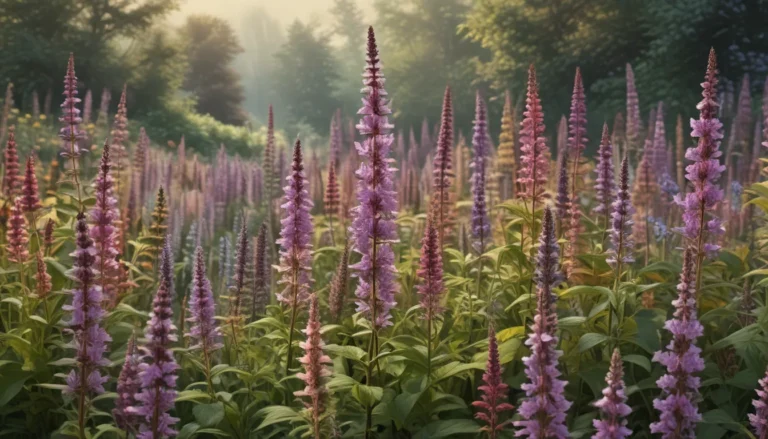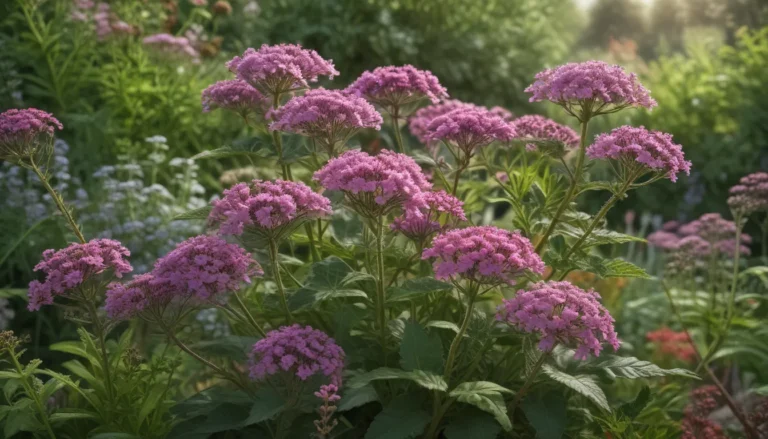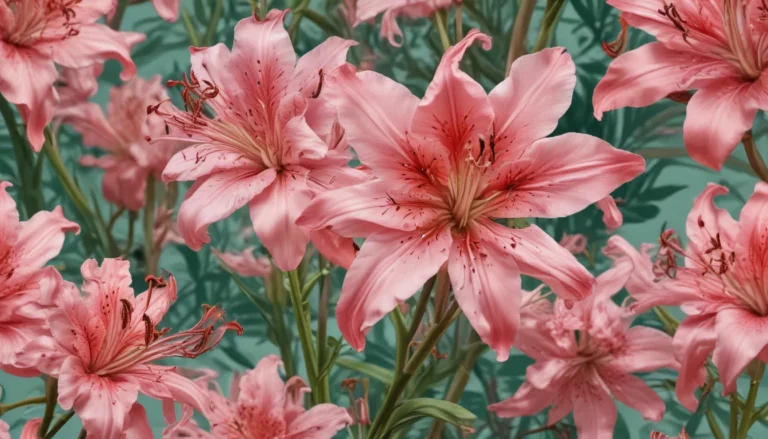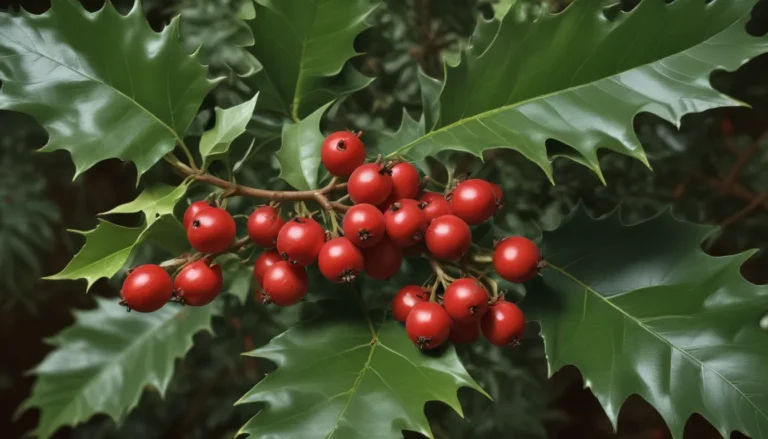The pictures we use in our articles might not show exactly what the words say. We choose these pictures to make you interested in reading more. The pictures work together with the words but don’t take their place. The words still tell you the important facts.
When it comes to trees, the pine stands out as one of the most captivating and versatile species in the natural world. With its iconic needles and cone-shaped fruits, the pine tree has captured the hearts and imaginations of people worldwide. But did you know that there is so much more to discover about these majestic trees?
In this article, we will delve into 17 astounding facts about pine that will deepen your appreciation for these remarkable plants. From their unique adaptations to their cultural significance and ecological importance, pine trees truly are wonders of nature. So, lace up your hiking boots and join us on a journey to explore the enchanting world of pine trees.
Key Takeaways:
- Pine trees, with their evergreen nature and distinctive pine scent, play crucial roles in wildlife habitats, air purification, and various cultures around the globe. - Pine wood is highly valued in construction and furniture making, while pine needles are a rich source of Vitamin C. Pine trees have a long history of medicinal use and offer unique benefits for both the environment and human health.
Pine Trees: Evergreen Symbols of Resilience
Pine trees are renowned for their needle-like leaves that remain green throughout the year, making them evergreen conifers. Belonging to the Pinaceae family, pine trees are native to numerous regions in the Northern Hemisphere.
Diverse and Abundant: The World of Pine Species
Surprisingly, there are over 120 species of pine trees, each unique in shape and size, found across different parts of the world. Some common types include the Scots pine, lodgepole pine, and ponderosa pine, each with its distinct characteristics.
Lifelong Guardians: The Longevity of Pine Trees
While some species of pine can live for several hundred years, the oldest recorded pine tree boasts an astonishing age of over 4,900 years! Such longevity showcases the resilience and endurance of these remarkable trees.
Seeds of Renewal: The Secret Life of Pinecones
Pine trees produce pinecones, the reproductive organs that contain seeds essential for new tree growth. These seeds are dispersed by various means, such as wind or animals, enabling the cycle of life to continue.
Aroma of the Forest: The Distinctive Pine Scent
One cannot mistake the fragrance of a pine tree, derived from the resin it produces. This scent not only adds to the charm of pine forests but also serves as a natural defense mechanism against pests and diseases.
Practical and Beautiful: The Versatility of Pine Wood
Renowned for its lightness and aesthetic appeal, pine wood is a favored material in construction and furniture making. Its ease of workability makes it a popular choice for various applications.
Healing from Nature: Medicinal Properties of Pine Trees
For centuries, the bark, needles, and resin of pine trees have been utilized in traditional medicine for their anti-inflammatory, antimicrobial, and expectorant properties. These natural remedies continue to offer health benefits to this day.
The Power of Vitamin C: Pine Needles as Nutrient Sources
Pine needles boast a high concentration of Vitamin C, making them a valuable source of this essential nutrient. Incorporating pine needle extracts into your diet can provide a healthy dose of Vitamin C.
Breathing Easy: Pine Forests and Air Purification
Pine tree forests play a vital role in purifying the air by absorbing carbon dioxide and releasing oxygen. This process contributes to improving air quality and reducing pollution in the environment.
Habitat for All: Pine Trees and Wildlife
Pine forests provide diverse habitats for a wide range of wildlife, including birds, squirrels, and various small mammals. These ecosystems support a rich biodiversity of flora and fauna.
Mulch from Nature: Pine Bark as Soil Aid
The bark of pine trees can be shredded and used as a natural mulch in gardening, helping to retain soil moisture and suppress weed growth. This sustainable practice benefits both plants and soil health.
Sticky Solutions: Pine Resin in Everyday Products
The sticky resin produced by pine trees possesses exceptional adhesive properties and is commonly used in the production of varnishes, adhesives, and even chewing gum. This versatile substance finds its way into various everyday products.
Culinary Delights: Pine Nuts as Flavorful Additions
Pine nuts, the edible seeds found inside pinecones, are popular culinary ingredients in many cuisines worldwide. Their unique nutty flavor adds a delicious touch to a variety of dishes.
Weathering the Storm: Adaptations for Extreme Conditions
Pine trees are equipped to thrive in challenging environmental conditions, including extreme temperatures, strong winds, and poor soil quality. Their resilience enables them to withstand harsh climates.
Unique Pine Varieties: The Pine Barrens of New Jersey
The Pine Barrens in New Jersey encompass a vast area of pine forest that is home to several rare and endemic species, including the famous Pitch Pine. This unique ecosystem showcases the diversity of pine trees in a distinct setting.
Symbols of Wisdom and Resilience: Cultural Significance of Pine Trees
Throughout history, pine trees have held cultural and symbolic significance in various societies, representing longevity, wisdom, and resilience. Their presence in folklore and traditions highlights their enduring importance.
Allergies and Challenges: Pine Tree Pollen Concerns
While pine trees offer numerous benefits, the pollen they produce can trigger allergies in some individuals. Symptoms such as sneezing, itchy eyes, and congestion may result from exposure to pine tree pollen.
Conclusion: Embracing the Beauty and Utility of Pine Trees
In conclusion, pine trees stand as remarkable plants with a multitude of fascinating qualities and practical uses. From their adaptability to diverse environmental conditions to their valuable contributions to human health and well-being, pine trees remain invaluable assets in the natural world.
Whether you are a nature enthusiast, a DIY aficionado, or simply curious about the wonders of the world around you, exploring the astounding facts about pine trees can expand your horizons and deepen your admiration for these incredible plants. Their rich history, remarkable adaptations, and ecological significance make them truly exceptional in the plant kingdom.
FAQs: Answers to Your Burning Questions About Pine Trees
- How many species of pine exist worldwide?
-
There are over 120 species of pine trees found across the globe.
-
Can pine trees withstand extreme weather conditions?
-
Yes, many pine trees have adaptations that allow them to thrive in harsh climates.
-
Is pine wood considered a sustainable building material?
-
Absolutely, pine wood is a renewable resource that can be responsibly harvested, making it a sustainable choice for construction.
-
Are there health benefits associated with pine trees?
-
Indeed, pine trees and their extracts offer antimicrobial, anti-inflammatory, and respiratory health benefits through traditional medicinal uses.
-
Are all pine trees evergreen?
-
While most pine species are evergreen with needle-like foliage, some deciduous varieties like the larch pine shed their needles in the fall.
-
Can pine needles be used as a natural mulch?
-
Yes, pine needles serve as effective natural mulch, aiding in moisture retention, weed suppression, and soil health.
-
Do pine trees emit a strong scent?
-
Pine trees have a distinct and pleasant aroma primarily derived from the resin they produce.
-
Are pine forests critical for wildlife habitats?
-
Yes, pine forests provide essential habitats for a wide range of wildlife species, fostering biodiversity.
-
Can pine trees be grown in home gardens?
-
Many types of pine trees can thrive in home gardens, provided they have adequate space and appropriate soil conditions.
-
What is the typical lifespan of a pine tree?
- Pine tree lifespans vary by species, with many capable of living for several hundred years.
Pine trees astound with their impressive characteristics, but exploring the unique traits of shortleaf and yellow pine trees adds depth to our understanding of these natural wonders. Technological advancements in Pembroke Pines, Florida, highlight innovation and progress in urban landscapes. Each pine species offers a blend of beauty, resilience, and practicality, enriching our connection to nature's marvels.
Final Thoughts: Journeying Through the Splendor of Pine Trees
Our dedication to sharing reliable and captivating content drives us to deliver the most engaging facts and insights to our readers. Each detail provided on our platform stems from contributions by individuals like you, ensuring a diverse and authentic experience. As you explore the world of pine trees and beyond, trust in our commitment to quality, accuracy, and authenticity. Join us on this enlightening journey as we uncover the wonders of nature and human ingenuity.






